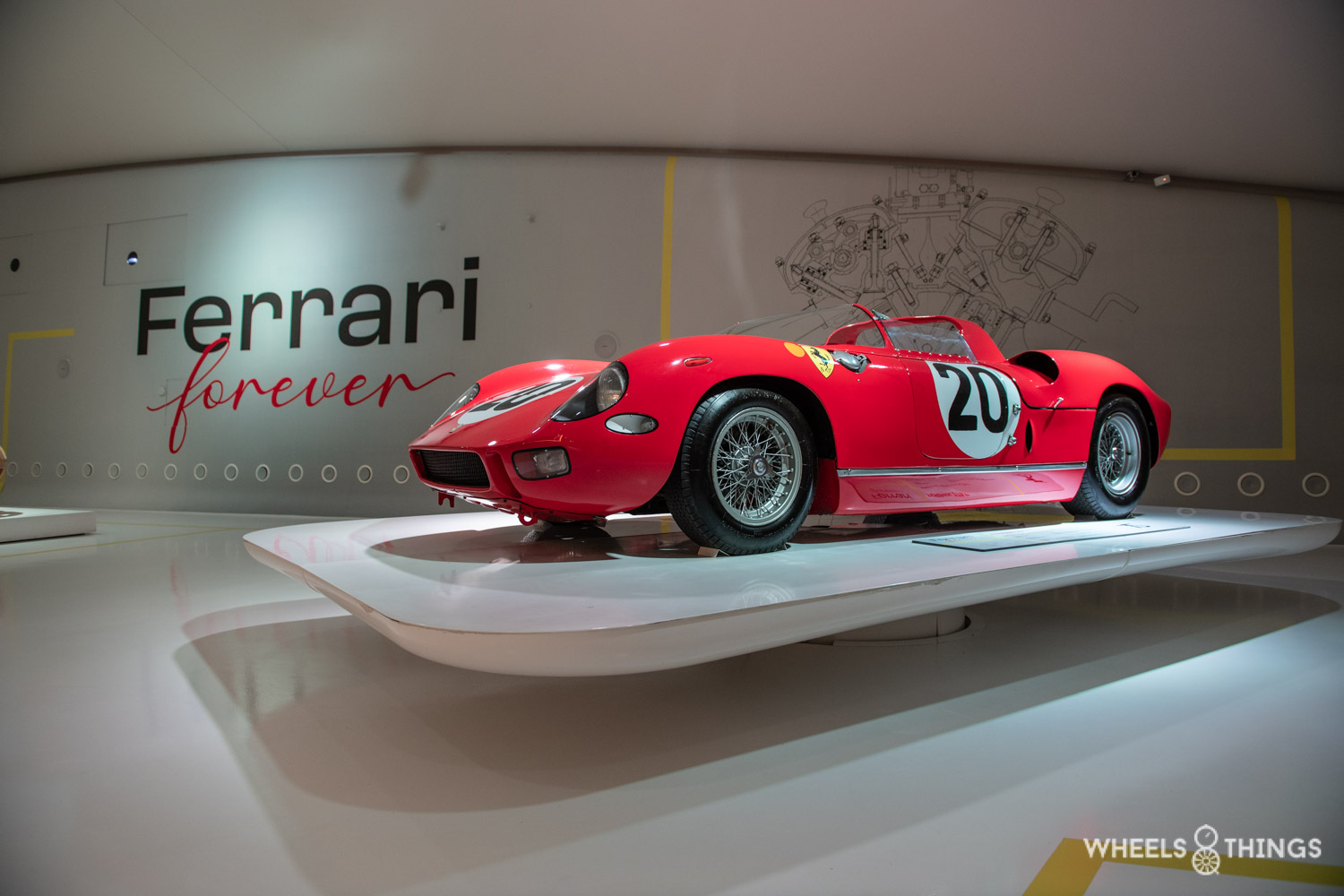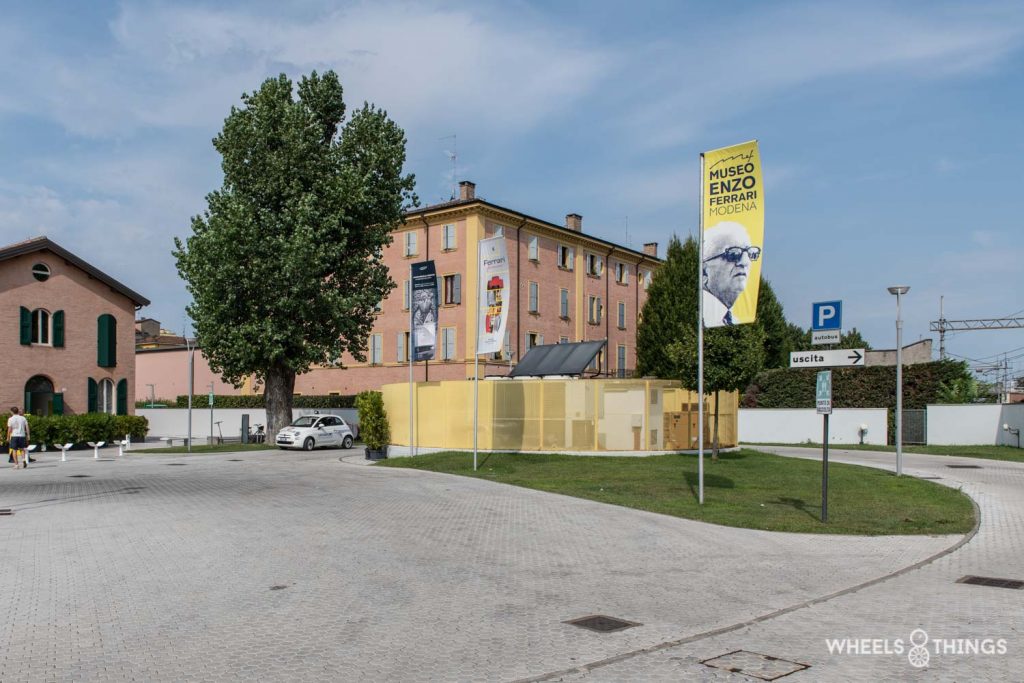
Since we went on holiday to Italy by car this year, a small diversions past Modena was the obvious choice. So a visit to the Enzo Ferrari museum in Modena was inevitable.
By the way, this is not just a museum you really get immersed in the world of Ferrari.
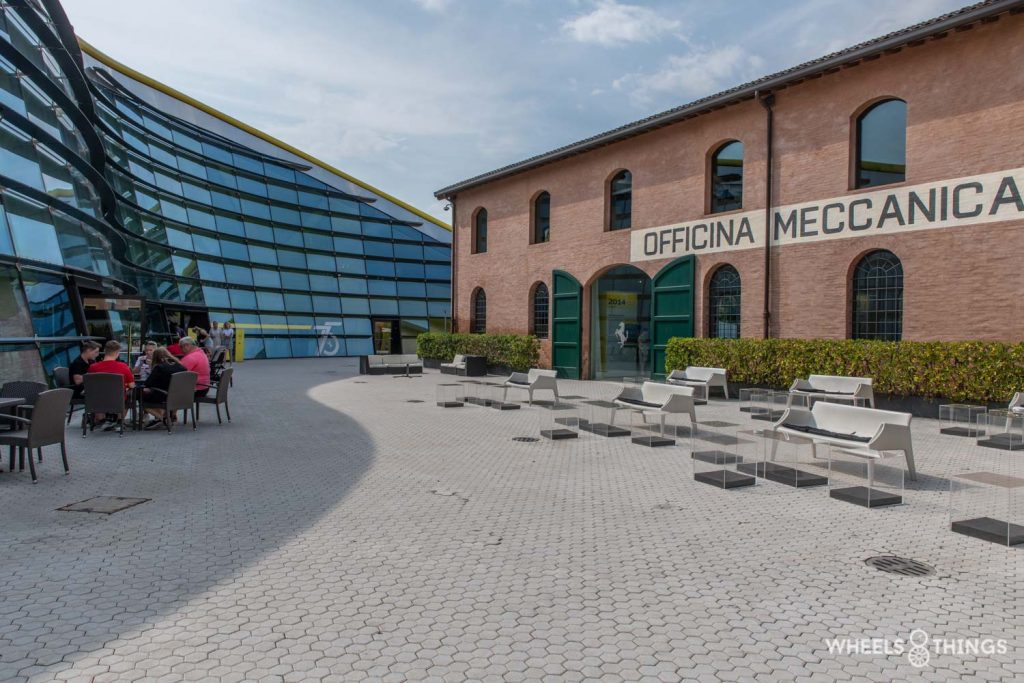
You enter the museum through the shop where you can already immediately enjoy the building’s fantastic architecture. Old and new have been masterfully combined here. The choice to visit this museum and not also Maranello had more to do with lack of time than desire. Let us say it is a good motivation to come back again.
Where everything began
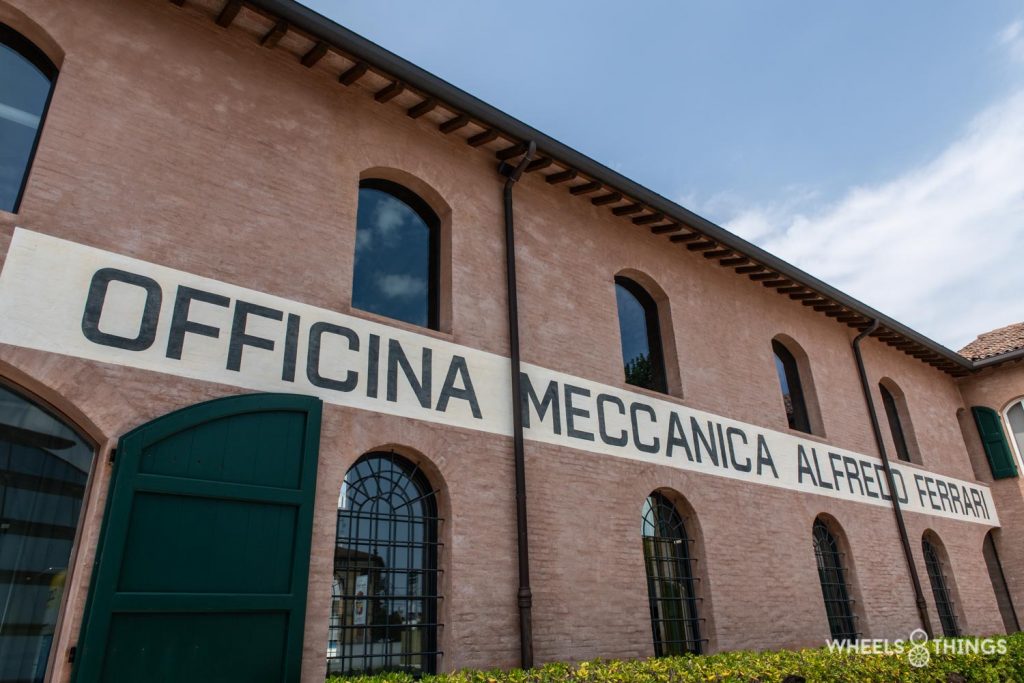
In Modena, you find mostly the classic cars and less the racing models. Granted, Maranello is bigger but I thought we should first visit the site where it all started. This site consists of two buildings. An old building where Ferrari was started and a new building opened in 2012 where you find the main hall.
Impressive and spacious

From the moment you step into the hall you get a sense of space. Not like in many other museums where everything is crammed together. Here, every car on display gets the space it deserves nicely.
Some models on display
Introducing every model would lead us too far but a few I want to pick out anyway. The choice is not easy because they are all gems.
Ferrari 250 GT Competizione – 1956 / V12 / 2953,20cc / 260pk
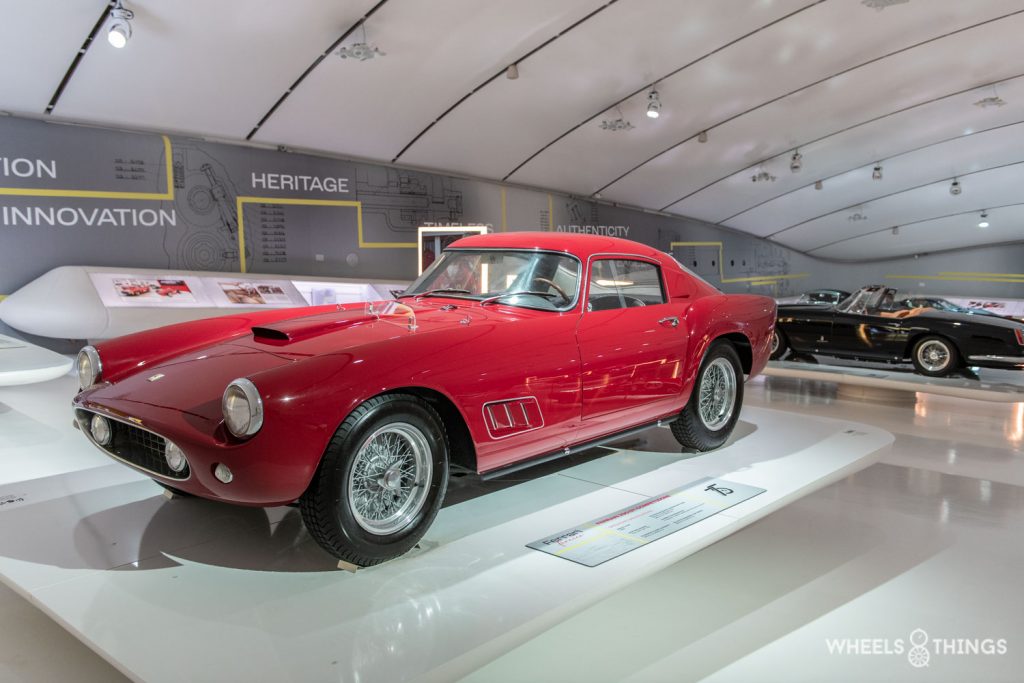
The Ferrari 250 GT Berlinetta (LWB) was introduced in 1956. It was nicknamed Tour de France after dominating this rally for years. From 1954 to 1959, Ferrari produced around a hundred purpose-built coupes for endurance sports car racing on the long-wheelbase chassis. The cars proved their versatility in numerous races and soon became the favourite racer among top drivers.
Ferrari 275 GTB/4 – 1966 / V12 / 3285,70cc / 300pk
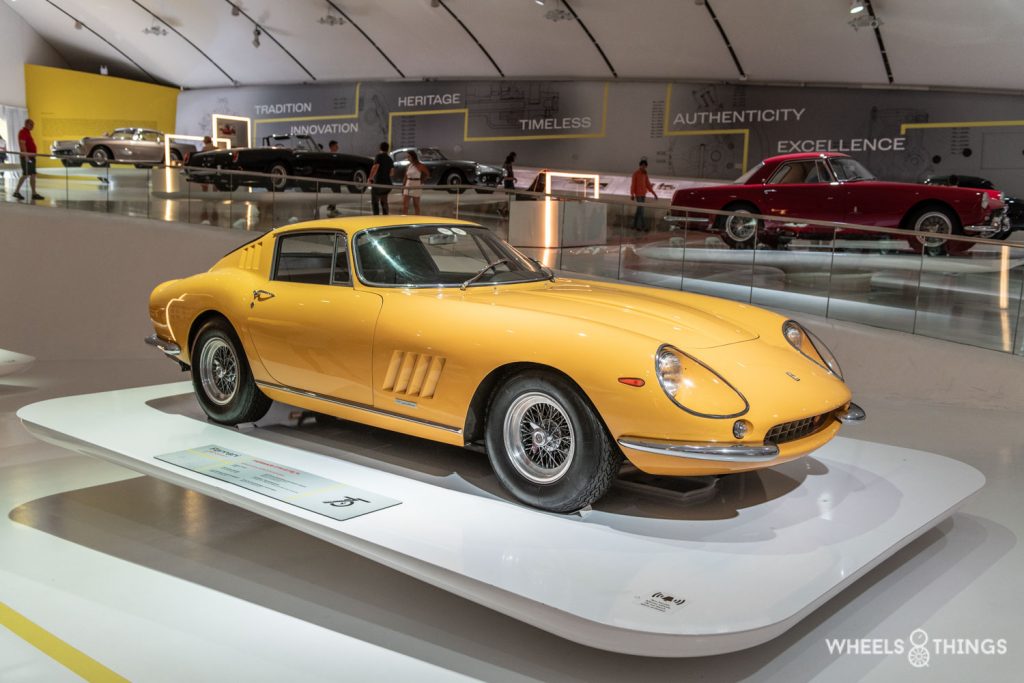
Barely two years after the introduction of the Ferrari 275, Ferrari was already coming out with a vastly improved version of it. The 275 GTB/4 where serious work had been done on the 3.3-litre V12. It had now been given four overhead camshafts and produced 300 hp. A gain of 20 hp over the 280 hp in the regular 275. The 275 GTB/4 had six carburettors as standard. The Ferrari 275 GTB/4 was first shown at the 1966 Paris Motor Show.
Ferrari 375 MM – 1954 / V12 / 4493,73cc / 335pk
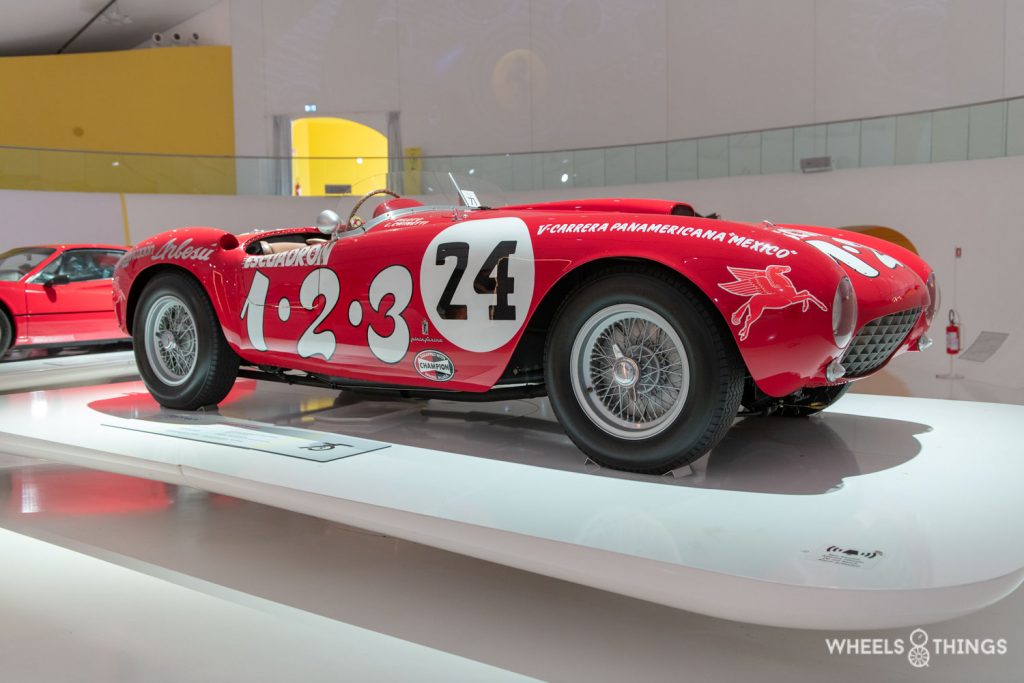
Perhaps one of the most important cars in Ferrari’s illustrious history. This Ferrari 375 MM was a sports car for the road. It was named 375 after its single-cylinder displacement and the ‘MM’ stood for the Mille Miglia race. A total of 26 examples were built including four converted examples of the 340 MM. It raced in the Carrera Panamericana, though with limited success. A fourth place in 1953 and a second place in 1954. Of course, there were victories such as in the 24 Hours of Spa and the 12 Hours of Casablanca. The 1000km race at the Nürburgring with Giuseppe Farina as pilot also skewed the 375 MM’s record.
Ferrari Dino 245 GTS – 1969 / V6 / 2419,20cc / 195pk
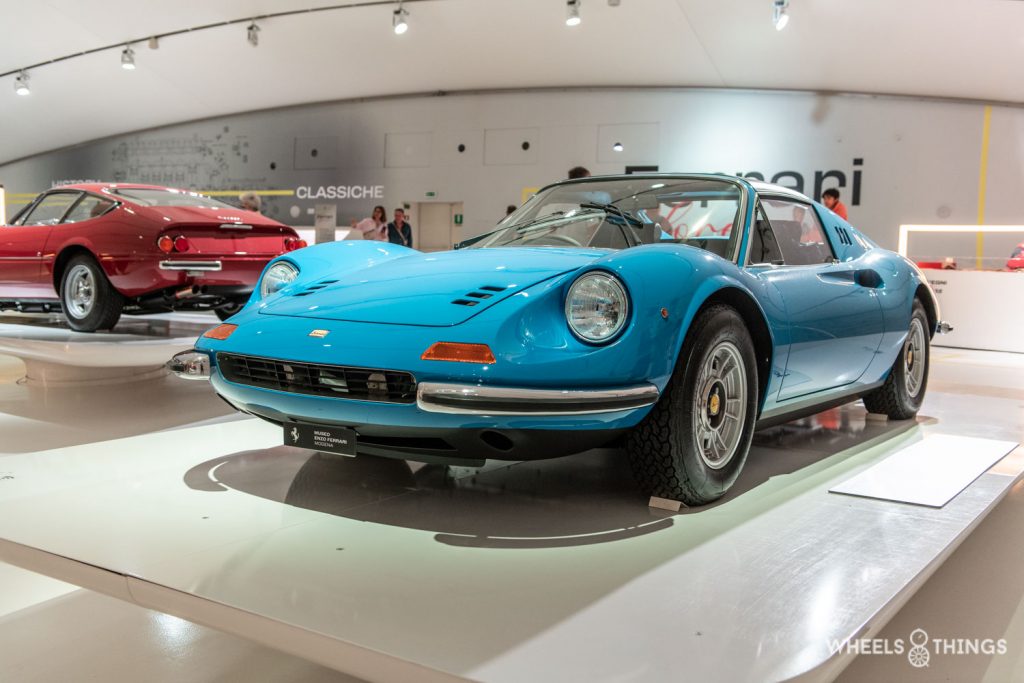
The Dino 206 GT, 246 GT and 246 GTS were mid-engined V6 sports cars. They were produced by Ferrari and sold under the brand name Dino (Enzo Ferrari’s son). Production took place between 1967 and 1974.
The Dino 246 was the first car produced in large numbers for Ferrari. It is praised by many for its driving qualities and pioneering design.
Due to the demand for more and more power, a 2.4 l V6 engine with two valves per cylinder was developed. The iron block with alloy heads produced 195 hp at 7600 rpm with 226 nm of torque. From 1969 to 1974, a total of 3569 Dinos 246 GT & GTS were produced by Ferrari.
Ferrari 166 Inter – 1950 / V12 / 1995,02cc / 90pk
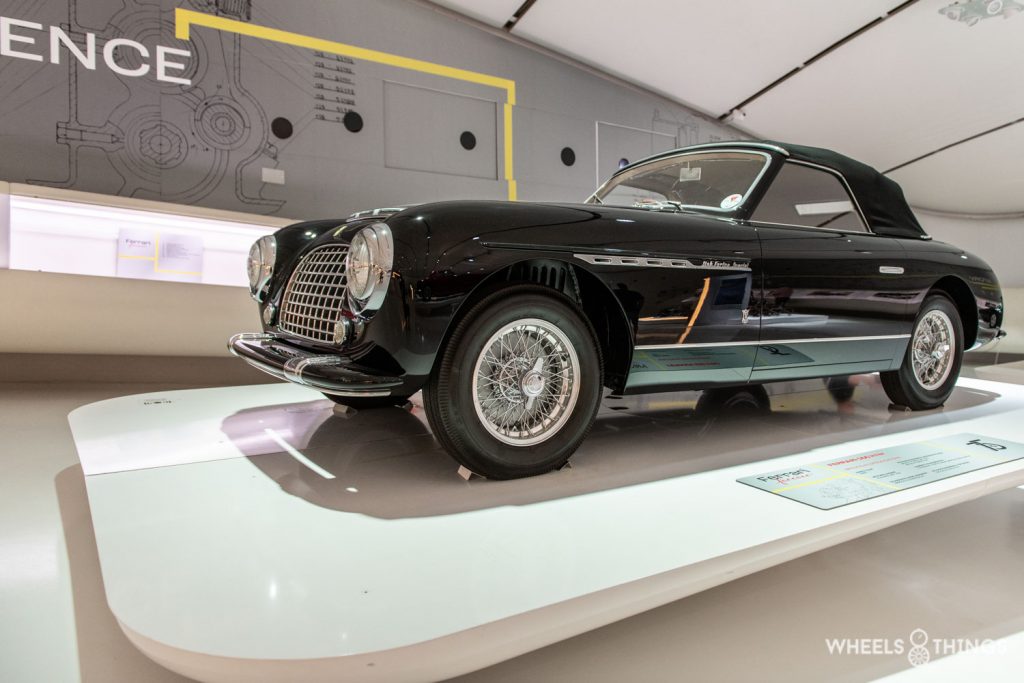
The Ferrari 166 Inter was the first GT made by Italian manufacturer Ferrari. The car was based on the 166 S and the 125 S racing cars. On 6 October 1949, the 166 Inter was presented at the Mondial de l’Automobile. Shortly after, sales of the first Ferrari for public roads began.
With its compact V12 with only 1995.02cc capacity, the engine still delivered 90hp which made the 166 Inter 170km/h fast.
Wooden and metal mould
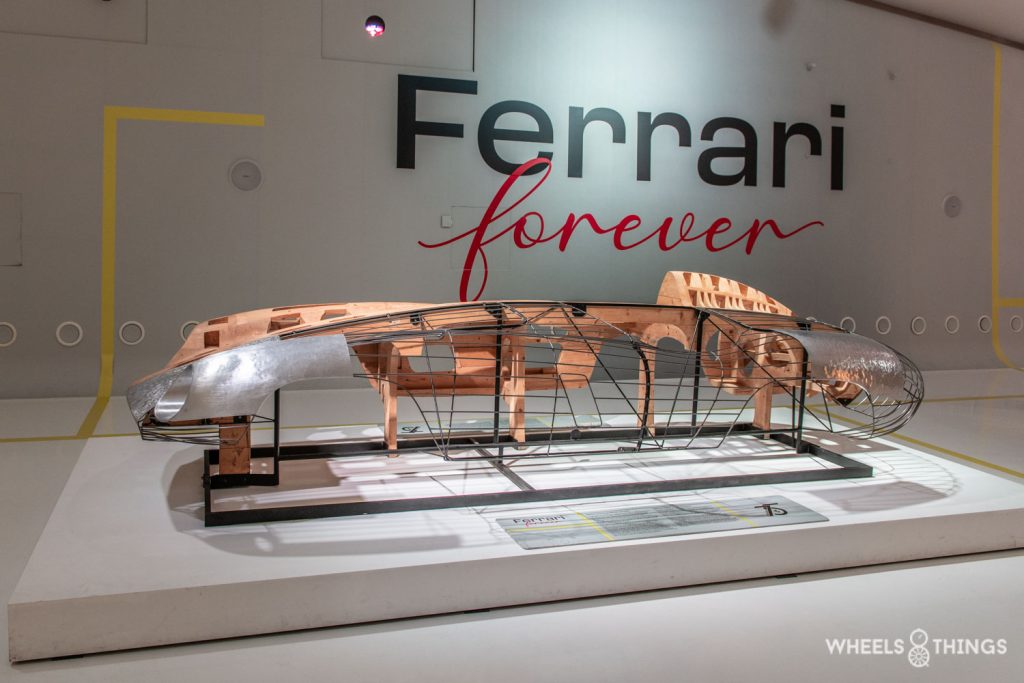
In the period from 1940 to 1960, bodywork engineers created a template for the various parts of the car based on design drawings. The design also took into account aerodynamics and the positioning of the various mechanical parts. The sheet metal, usually aluminium in the case of Ferrari, was shaped by hand into the desired shape. This was done by craftsmen with special tools. The various pieces of sheet metal were sewn together, so to speak.
Ferrari F2003-GA – 2003 / V10 / 2997cc / 845pk
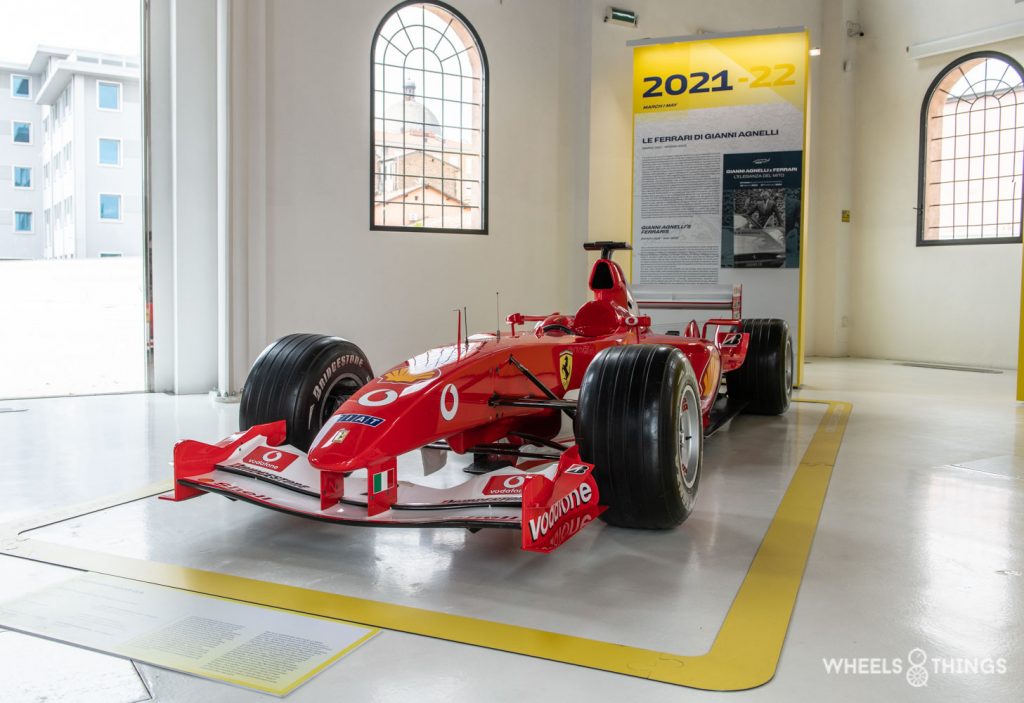
The fact that Ferrari and Formula 1 are often mentioned in the same breath probably won’t surprise anyone. Since 1950, the Formula One World Championship has been organised and Ferrari is the only team to have been there from the start. Not surprisingly, they have made a huge mark on the sport. Throughout this history, it is Ferrari that has won the most drivers’ and constructors’ championships. Alberto Ascari, Juan Manuel Fangio, Mike Hawthorn, Phill Hill, John Surtees, Niki Lauda, Jody Scheckter, Michael Schumacher and Kimi Räikkönen gifted the tifosi the coveted championships.
The engines
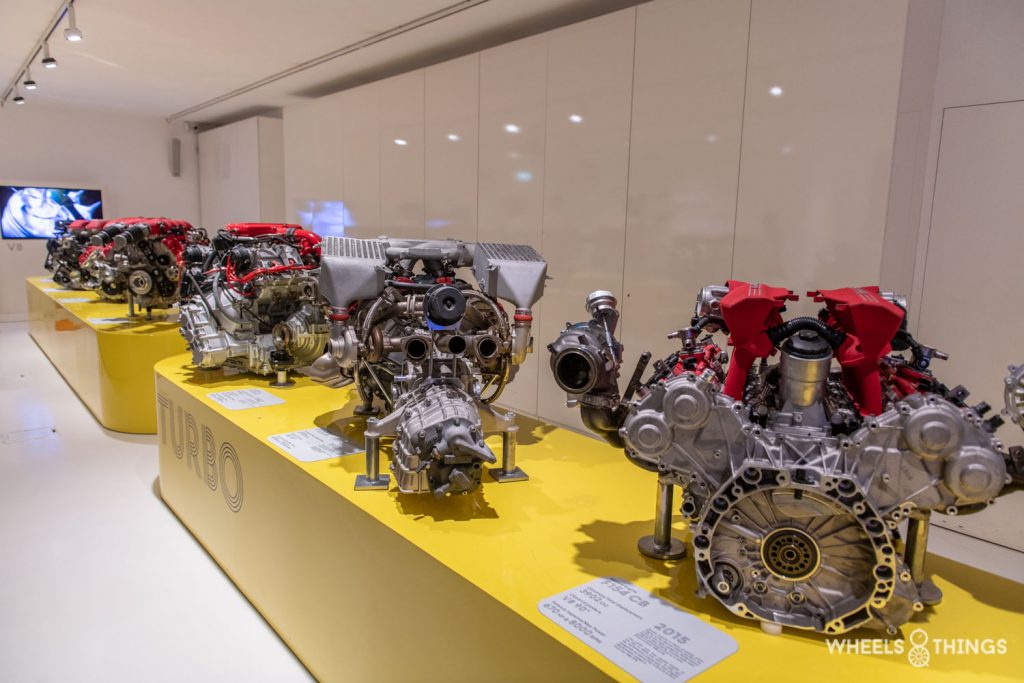
That engines are important to Ferrari proves a fully equipped room that contains only engines. From a rather modest V6 to majestic V12 engines.
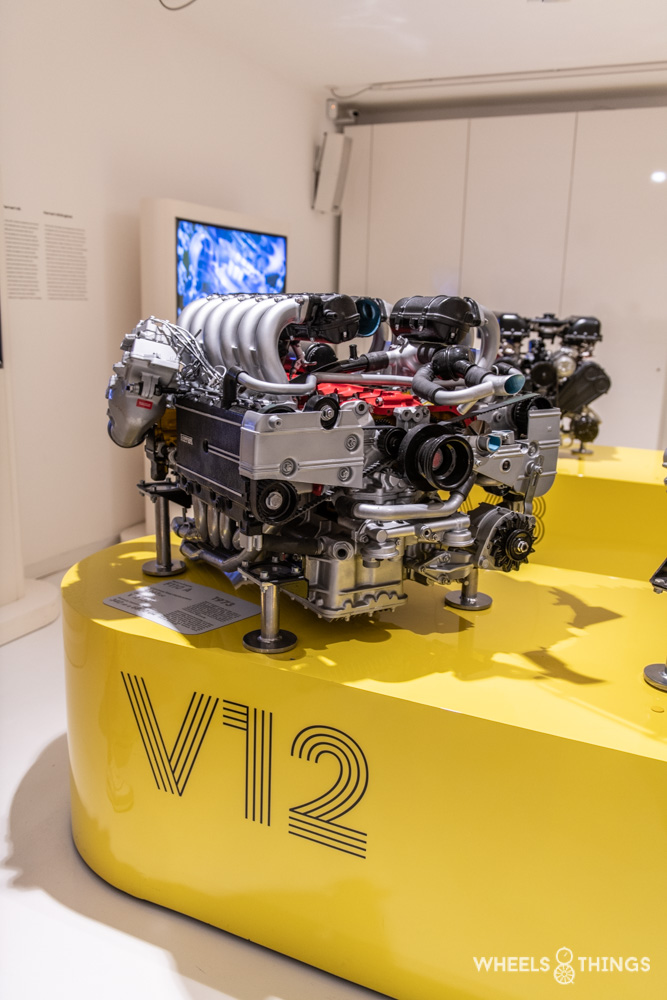
They are all on display, some more impressive than others but all gems of engineering. The F110A from the 512BB above was still the most impressive in terms of size. The description is not quite correct in my opinion. They call it a V12 180°, if your cylinders lie flat opposite each other, in my opinion it is a boxer engine and not a V engine. In fact, in the model name it literally reads ‘512 Berlinetta Boxer’. We’ll forgive them that mistake for sure.
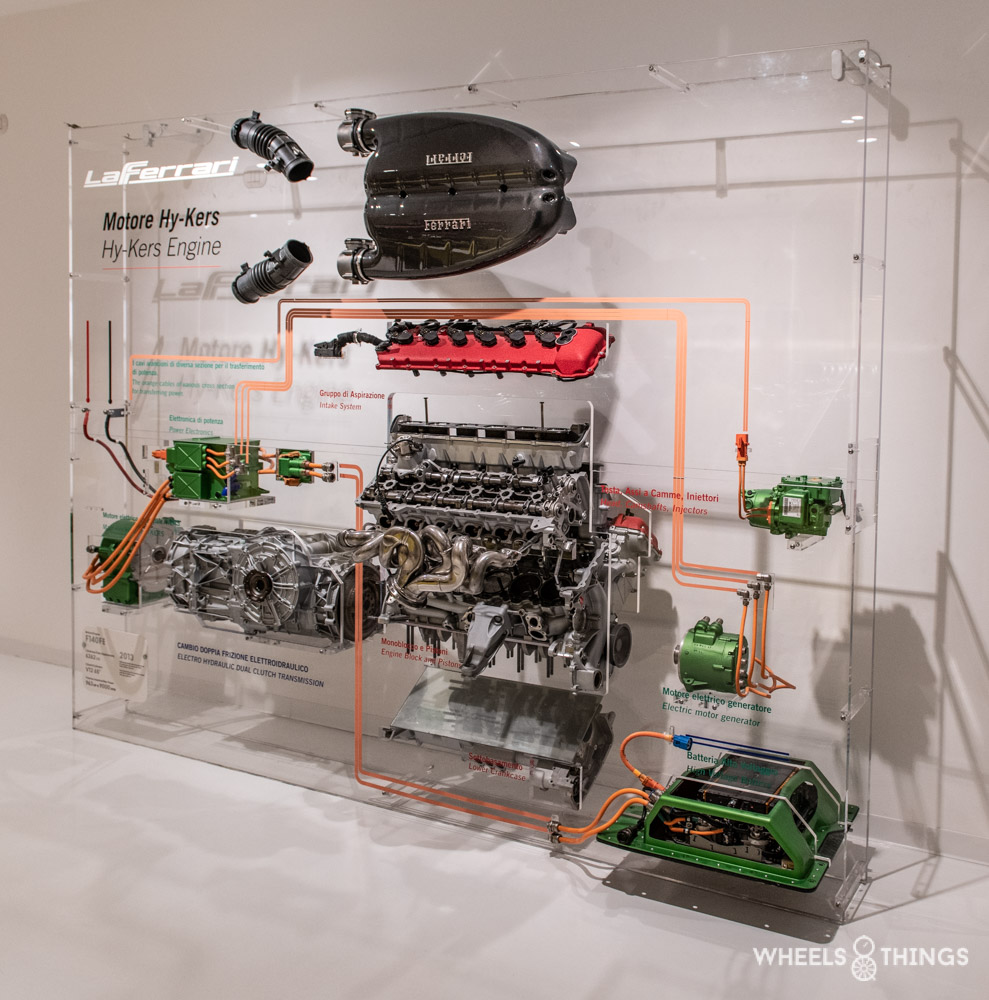
The Hi-Kers system from the La Ferrari is also explained on a large display.
The drawing board
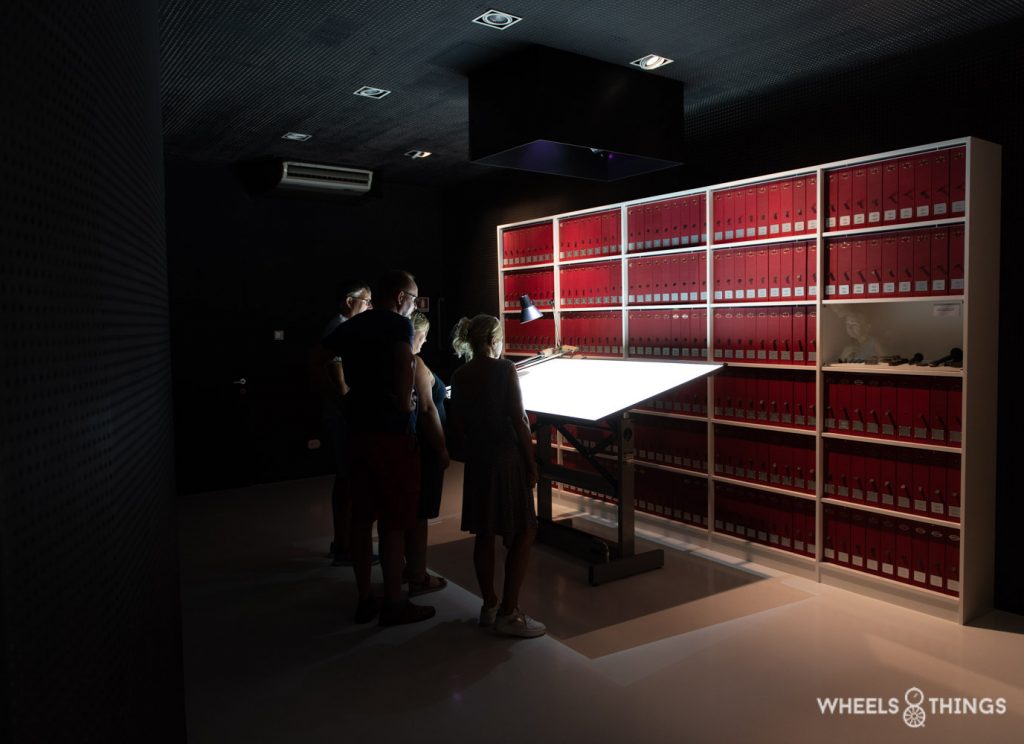
Everything starts at the drawing board when it comes to designs. Whether it’s a mixer or a Ferrari, a design needs to be drawn out. This separately decorated room shows this beautifully through a presentation on the drawing board. Today, of course, everything goes through computer programmes. Again, I am sure it will not be easy to build cars and engines under today’s standards. But somehow I have more admiration for how people used to do it.
The office of ‘il Commendatore‘
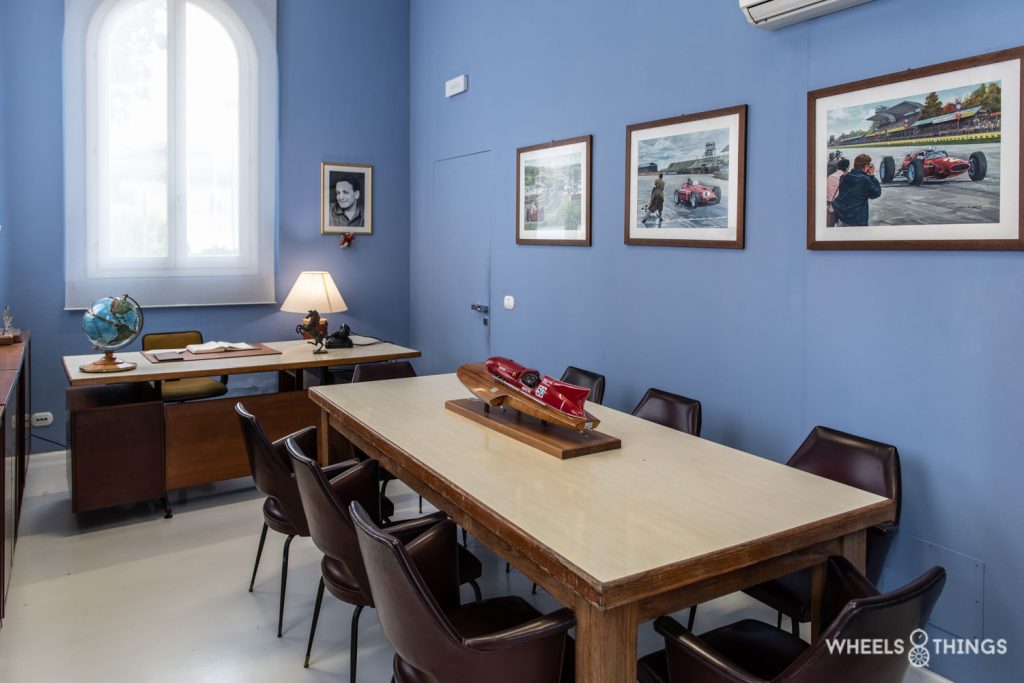
Enzo Ferrari’s office has even been recreated with as many original attributes as possible.
You could round up a visit to an hour. But you might as well spend several hours there, with each object having clear explanations in Italian and English. During our visit, everyone was asked to make their way to the main hall. A film was projected on the walls about Ferrari’s history.
If you want to see more of Ferrari, check out our article from Interclassics Brussels where Ferrari celebrated their 75th anniversary.
If you get anywhere near Modena, I can only recommend a visit. More info can be found on the museum’s website.
